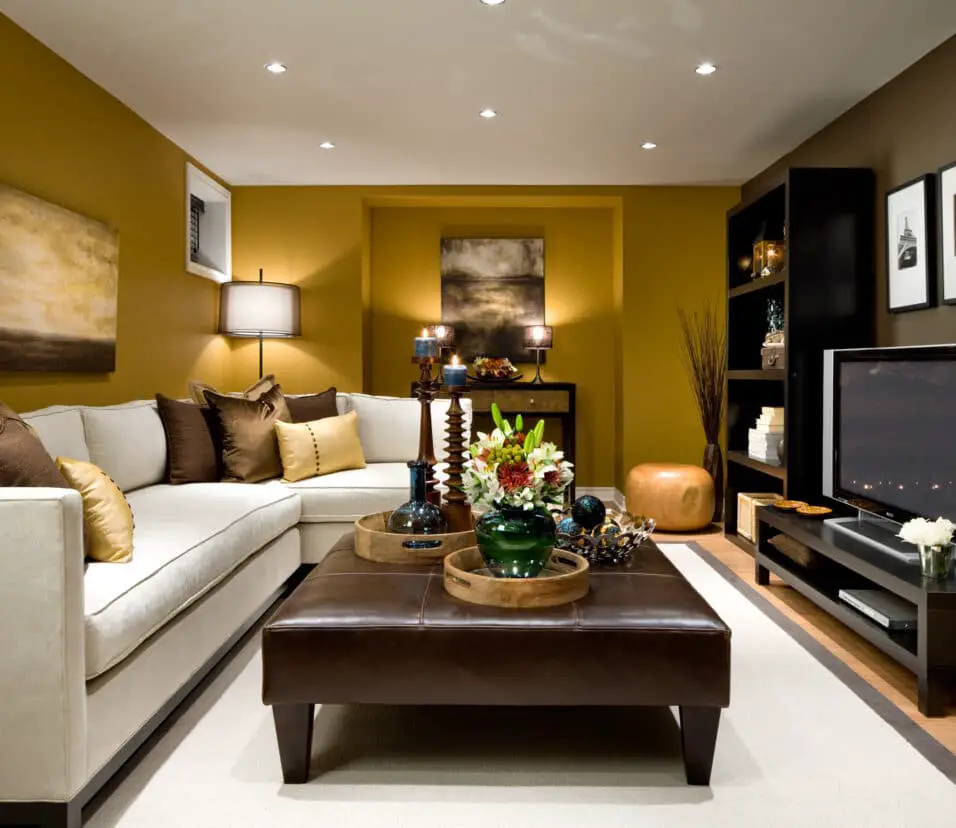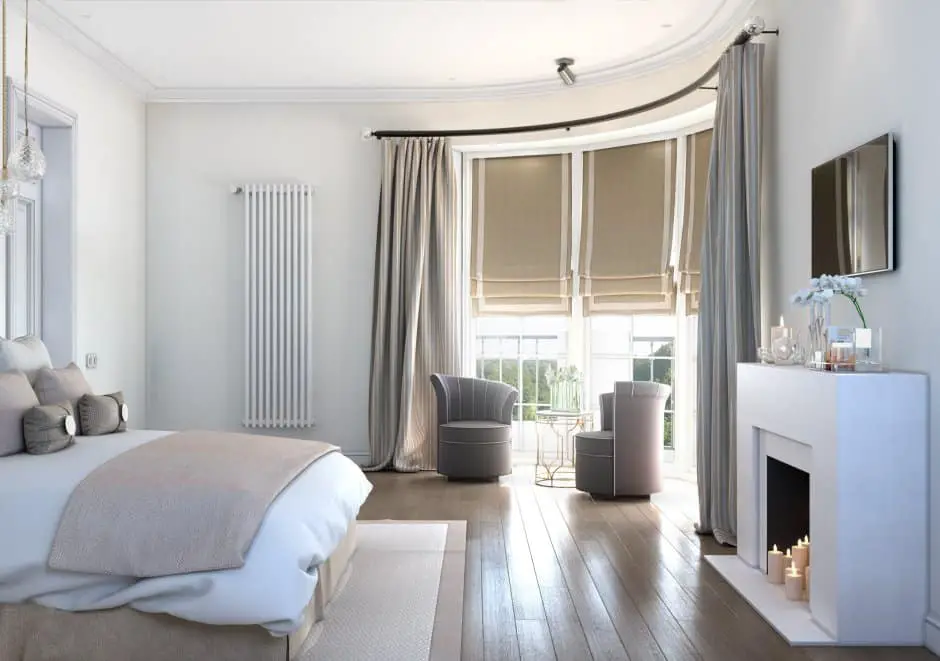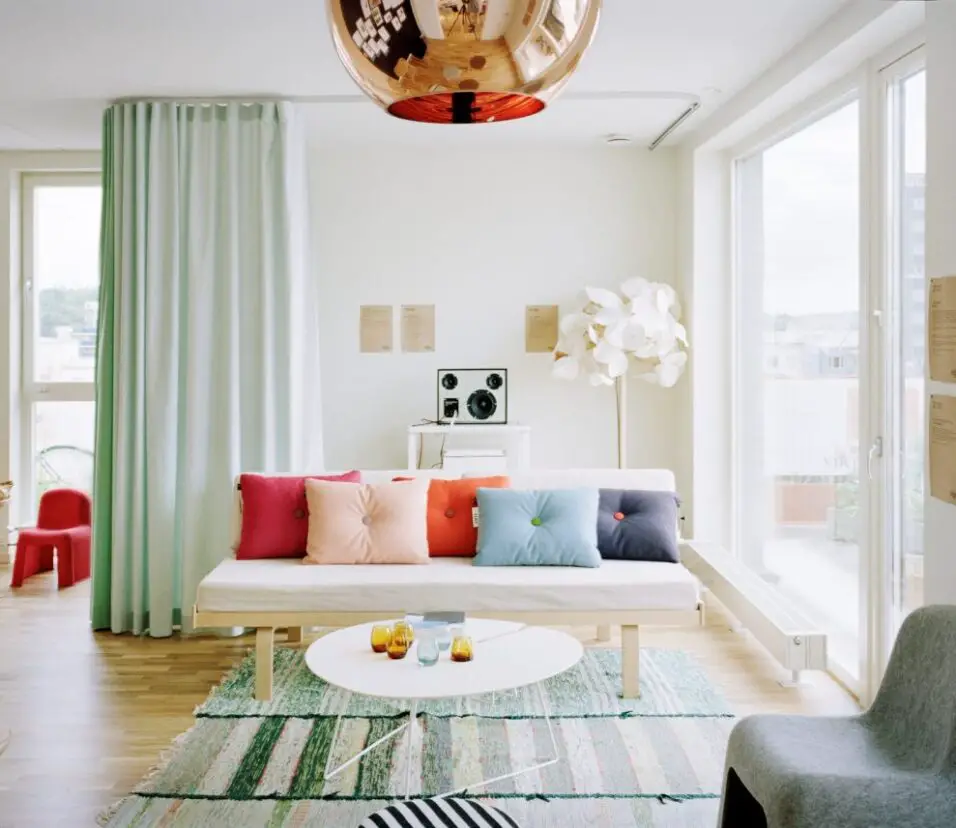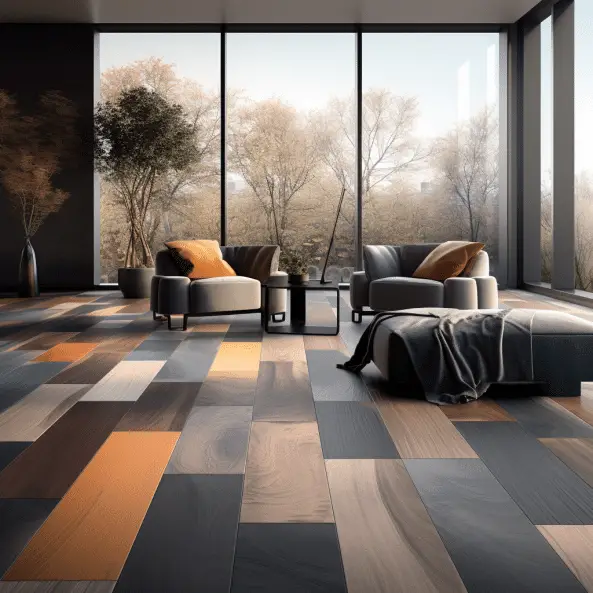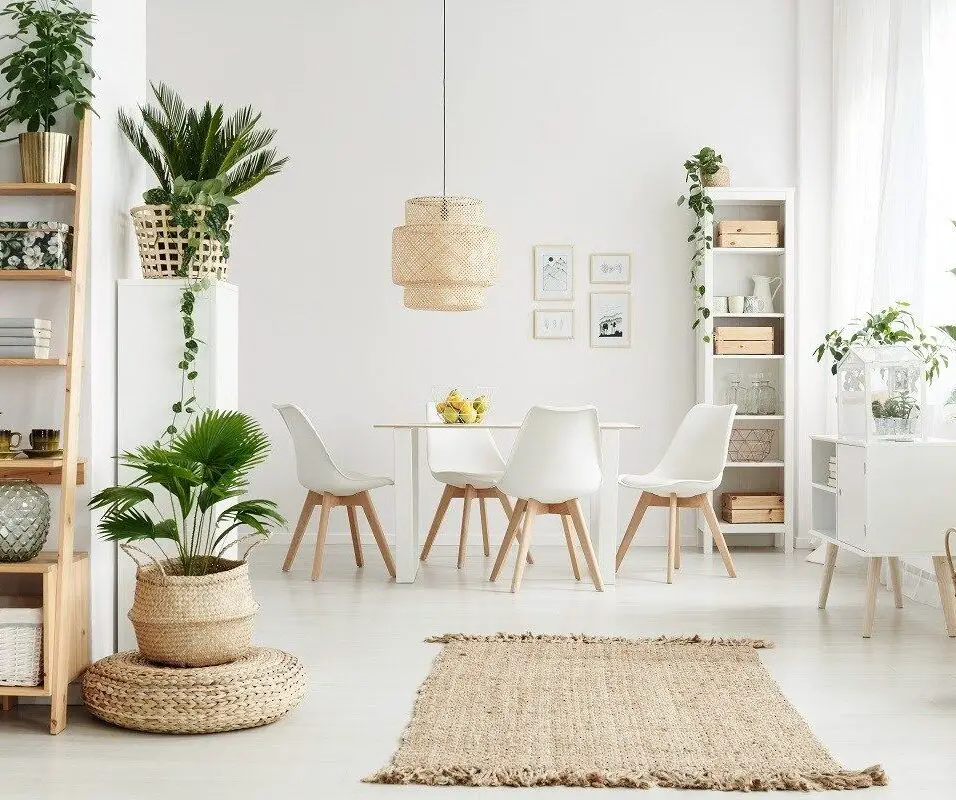How To Design A Big Room
Introduction
Designing a big room can be an exciting and challenging endeavor. Whether it’s a spacious living room, a grand dining area, or an expansive entertainment space, the possibilities for creating a captivating and functional big room design are endless. However, the task can also be overwhelming due to the vast amount of space that needs to be filled and the need to strike the right balance between aesthetics and functionality.
One of the first things to consider when designing a big room is the overall layout. The layout of the room will greatly impact the flow and functionality of the space. It is important to carefully plan the placement of furniture, fixtures, and other elements to ensure that the room is well-utilized and visually appealing. This may involve creating different zones within the room for various activities such as seating areas, entertainment zones, and dining spaces.
Another important aspect to consider is the choice of colors and materials. In a big room, it is crucial to strike a balance between a cohesive color scheme and the need to add visual interest. Choosing a neutral base color and adding pops of bold hues through accessories or accent walls can create a visually pleasing contrast. Additionally, selecting durable and high-quality materials for furniture, flooring, and other elements is essential to ensure that the room stands the test of time and remains functional.
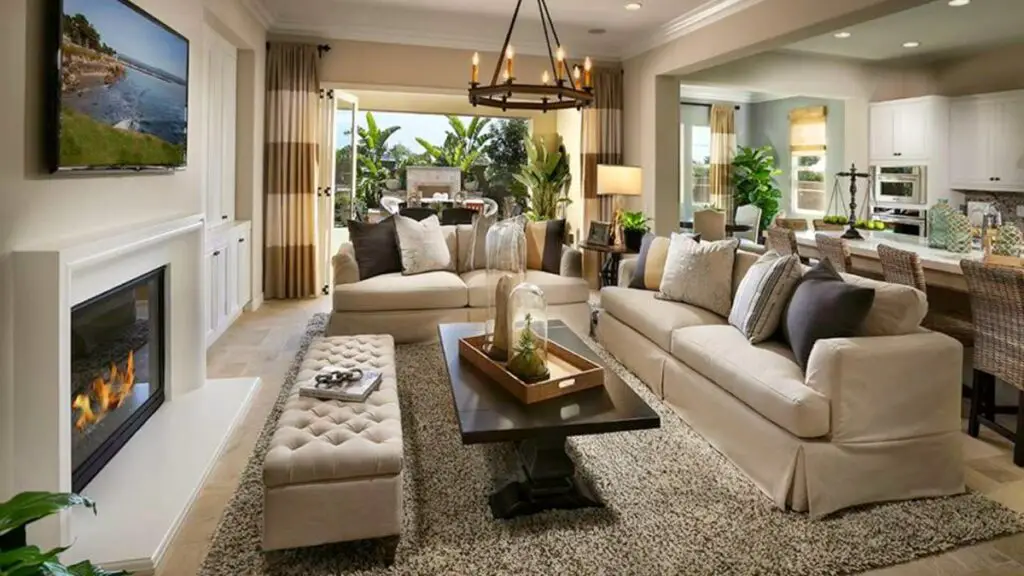
How Do You Set Up A Big Room?
13 Decorating Tips To Making A Large Room Feel Cozy
- Strategically place tall potted plants.
- Paint two-tone walls.
- Swap your coffee tables for oversized ottomans.
- Round out a big seating plan with a pair of X-benches.
- Use a daybed as a room divider.
- Define zones with a console table.
- Add coziness with a screen.
Setting up a big room requires careful planning and consideration to ensure that the space is utilized effectively and meets your needs. In this section, we will explore some essential steps and tips for setting up a big room.
Firstly, it is important to define the purpose of the room. Determine how you plan to use the space and what activities will take place in it. For example, if it is a living room, you may want to create separate seating areas for relaxation and entertaining. If it is a dining area, you will need to plan for a large dining table and chairs. Understanding the purpose of the room will help guide your layout and furniture choices.
Next, consider the layout of the room. Start by measuring the dimensions of the space and sketching a floor plan. This will help you determine the best placement for furniture, fixtures, and other elements. Take into account factors such as traffic flow, natural light sources, and any architectural features that may impact the layout.
Once you have a clear layout in mind, select your furniture pieces. For a big room, it is important to choose furniture that is appropriately scaled to the space. Oversized furniture can make the room feel cramped, while undersized pieces can get lost in the vastness of the room. Consider the function of each furniture piece and how it will fit into the overall layout. Modular furniture can be a great option as it allows for flexibility and customization.
How To Decorate A Bigger Room?
To Help Tackle Large Decorating Projects, Here Are Some Tips:
- Visualize the Space with Drawings.
- Break Up the Space.
- Take Traffic Flow into Consideration.
- Implement the Use of Rugs.
- Create Focal Points Within the Room.
- Pay Attention to Lighting.
- Use Large Wall Space to Your Advantage.
- Implement a Variety of Furniture Styles.
Decorating a bigger room can be an exciting and challenging task. With ample space to work with, there are endless possibilities to create a visually stunning and inviting atmosphere. In this section, we will explore some essential tips and ideas to help you decorate a bigger room.
One of the first considerations when decorating a bigger room is to establish a focal point. A focal point serves as the anchor of the room and draws attention to a specific area or feature. This can be achieved through a statement piece of furniture, a fireplace, a large artwork, or even a feature wall. By creating a focal point, you give the room a sense of purpose and direction.
Next, consider the color scheme for the room. When working with a bigger space, it is essential to choose a color palette that complements the size of the room. Opting for lighter shades can make the room feel more open and spacious. However, don’t be afraid to incorporate bold or vibrant colors as accents to add visual interest and personality. Consider using different shades and textures within the color scheme to create depth and dimension.
Furniture placement is another crucial aspect of decorating a bigger room. It is important to arrange furniture in a way that promotes conversation and interaction, especially if the room is used for entertaining or gathering. Consider creating separate seating areas or zones within the room to define different functions. Experiment with different furniture arrangements until you find the layout that works best for your needs.
What Makes A Room More Spacious?
Go big with accents. Many people think small when designing a small room. Instead, add a couple of oversized accessories, like a big piece of art or a single large chair. A lot of little objects make a room appear cluttered while one or two big ones make it feel more spacious.
Creating a sense of spaciousness in a room is essential for both visual appeal and functionality. Whether you are working with a small space or want to enhance the openness of a larger room, there are several key factors that contribute to making a room feel more spacious.
Firstly, the color scheme plays a significant role in creating a sense of space. Light and neutral colors tend to make a room feel larger and more open. Shades of white, cream, beige, and pastel tones reflect light, giving the illusion of a bigger space. By contrast, dark colors can make a room feel smaller and more confined. Opting for a monochromatic color scheme, where different shades of the same color are used, can also create a seamless and spacious look.
Another crucial factor in creating a spacious room is the strategic use of lighting. Adequate lighting can make a room feel bright and airy. Maximizing natural light by keeping windows unobstructed and using sheer or light-filtering window treatments allows more light to enter the space. Additionally, incorporating artificial lighting through various fixtures, such as recessed lights, pendant lights, or floor lamps, can help evenly illuminate the room and eliminate shadows.
Furniture selection and arrangement also play a significant role in creating a sense of spaciousness. Opt for furniture pieces that are proportionate to the room and avoid oversized or bulky items that can overwhelm the space. Choose furniture with legs or open bases, as they create a visual break and allow light to flow underneath, creating a sense of openness. Additionally, arranging furniture away from walls and creating distinct zones can give the room a more open and inviting feel.
Where Should A Sofa Be Placed In A Living Room?
A sofa should be placed at the end of the room or near a wall so that you can still move around easily when sitting on it. The couch should never block your view of other parts of the room or obstruct any doorways or windows.
When it comes to placing a sofa in a living room, there are several factors to consider to ensure optimal comfort, functionality, and aesthetics. The placement of the sofa can greatly impact the overall layout and flow of the room. In this section, we will explore some key considerations for determining the best placement for a sofa in a living room.
Firstly, it is important to take into account the focal point of the room. The focal point could be a fireplace, a television, a large window with a scenic view, or a statement piece of artwork. Placing the sofa facing the focal point allows for comfortable viewing and creates a sense of balance and harmony in the room.
Next, consider the size and shape of the living room. In smaller living rooms, placing the sofa against a wall can help maximize floor space and create a more open feel. However, in larger living rooms, floating the sofa away from the walls can create a more intimate and cozy seating area. This can be achieved by placing the sofa perpendicular to a wall or even in the center of the room, creating a conversation area with additional chairs or a coffee table.
The flow of traffic within the living room is another important consideration. Ensure that the placement of the sofa allows for easy movement and does not obstruct pathways. If there are multiple entry points or doorways, position the sofa in a way that it does not block the flow of people entering or exiting the room.
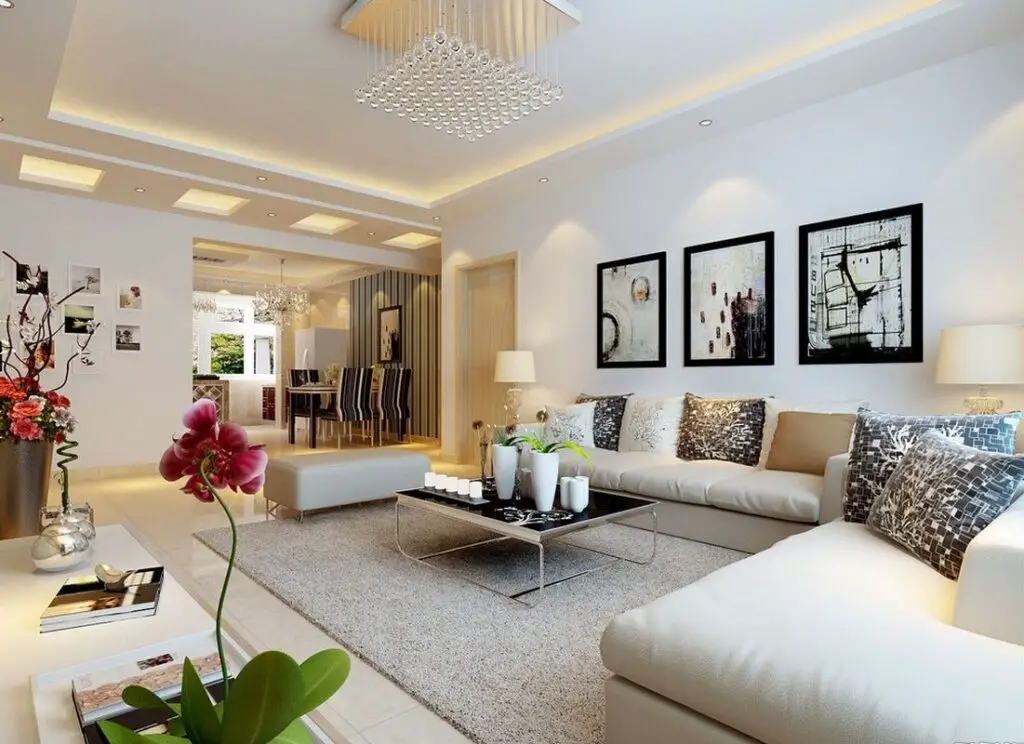
What Makes A Room Look Big?
Some expert tips to make a room look bigger include using lighter paint colors, hanging curtains at ceiling height, incorporating large mirrors, using multi-functional furniture, and utilizing wall space for storage.
Creating the illusion of a bigger room can make a space feel more open, airy, and inviting. While physical space may be limited, there are several techniques and design principles that can make a room look bigger. In this section, we will explore some key factors that contribute to making a room appear larger.
One of the most effective ways to make a room look bigger is through the use of color. Light and neutral colors tend to reflect more light and create an illusion of space. Opting for shades of white, cream, beige, or pastel tones on walls, floors, and furniture can make a room feel more expansive. Additionally, using a monochromatic color scheme, where different shades of the same color are used, can create a seamless and spacious look.
Maximizing natural light is another essential element in creating a room that looks bigger. Allow as much natural light as possible to enter the room by keeping windows unobstructed and using sheer or light-filtering window treatments. Natural light not only brightens up a space but also creates a sense of openness and connection to the outdoors.
Strategic lighting design is also crucial in making a room appear larger. Incorporate a mix of ambient, task, and accent lighting to evenly illuminate the room. Properly placed light fixtures can eliminate shadows and enhance the sense of depth and space. Consider using recessed lights or track lighting to avoid taking up valuable floor or wall space.
Does A Room Look Bigger With Or Without Furniture?
Empty rooms almost always appear smaller than they really are because without furniture it has no frame of reference. This empty room had doorways everywhere and a small fireplace that would make buyers feel like their furniture would absolutely not fit.
A room without furniture can create a sense of openness and spaciousness, especially in smaller rooms. Empty space allows for clear sightlines and unobstructed flow, making the room appear larger. Without furniture, there is more visual breathing room and the perception of more floor space. Additionally, an empty room can provide a blank canvas for design experimentation and flexibility in terms of future furniture placement.
On the other hand, a well-designed room with appropriately scaled furniture can also create the illusion of a larger space. The strategic placement and arrangement of furniture can define zones within the room and maximize functionality. Carefully chosen furniture can enhance the visual appeal and create a sense of balance and proportion in the space. For example, using furniture with open bases or legs can allow light to flow underneath, making the room feel more open. Additionally, furniture can be used to create focal points or anchor a space, drawing attention to certain areas and adding depth.
In larger rooms, having furniture can help create a sense of coziness and intimacy. Without furniture, a large room can feel empty and impersonal. By incorporating appropriately sized and styled furniture, you can create designated seating areas and make the room feel more inviting and comfortable.
What Angle Makes A Room Look Bigger?
Use a wide angle lens
Again, obvious but a wide angle lens will let in more of the surrounding thus making it look bigger. Don’t take this too far and use a fish eye lens but be careful that your straight lines are still straight.
The angle from which a room is viewed can greatly influence how it appears in terms of size and dimensions. While there isn’t a specific angle that universally makes a room look bigger, there are certain techniques you can employ to maximize the perceived size of a room from different viewpoints.
One effective angle that can make a room look bigger is to position yourself in a corner of the room. By standing or sitting in a corner and looking diagonally across the space, you can create a longer line of sight. This extended view allows the eye to travel further, creating an impression of a larger room. Additionally, this angle allows you to see multiple walls and the depth of the space, adding to the sense of expansiveness.
Another angle that can enhance the perceived size of a room is by looking from the doorway or entry point. When you enter a room, the first view you have can greatly impact your perception of its size. By positioning furniture and decor items strategically along the walls and avoiding clutter near the entry, you can create a clear path and an open view into the room. This unobstructed sightline gives the impression of a larger, more inviting space.
The angle from which natural light enters a room can also impact how it appears. Maximizing natural light sources, such as windows or skylights, can make a room feel brighter and more open. Placing mirrors strategically to reflect and bounce light around the room can further enhance the sense of spaciousness from any angle.
Do Mirrors Make Rooms Look Bigger?
The reflective properties of a mirror reflect light around and mirrors the room. The mirror might not be able to bring in natural light from the outdoor. The light it bounces, however, gives the same effect and tricks the eye to make the room seem bigger.
Mirrors are a powerful tool when it comes to making rooms look bigger. They have the ability to create an illusion of space, depth, and light, making a room appear more expansive and open. In this section, we will explore how mirrors can make rooms look bigger and the best ways to incorporate them into your space.
One of the primary ways mirrors make rooms look bigger is by reflecting light. Mirrors bounce natural and artificial light around the room, effectively brightening the space and making it feel more spacious. By reflecting light, mirrors create an airy and open atmosphere that can make even a small room appear larger. Place mirrors strategically across from windows or light sources to maximize their light-reflecting effect.
Mirrors also create a sense of depth in a room. When placed correctly, they can give the illusion that the space extends beyond its actual boundaries. A mirror on a wall can visually double the perceived depth, making the room seem larger than it actually is. Additionally, mirrors can create the illusion of more height if placed vertically, especially in rooms with low ceilings.

Conclusion
Designing a big room offers a world of possibilities and opportunities for creating a space that is both visually stunning and functional. By carefully considering the layout, colors, materials, lighting, and personal touches, you can design a big room that reflects your style and meets your needs.
Creating a well-thought-out layout is crucial in utilizing the vast amount of space in a big room effectively. Designating different zones for various activities and ensuring a smooth flow within the room enhances functionality and makes the space more inviting.
The choice of colors and materials plays a significant role in the overall design of a big room. Opting for a cohesive color scheme with pops of bold hues adds visual interest while maintaining a sense of harmony. Selecting high-quality materials ensures durability and longevity.
Lighting is another critical aspect of designing a big room. Incorporating a mix of natural light, artificial lighting, and accent lighting creates a warm and inviting ambiance. Using different types of light fixtures and incorporating dimmers allows for flexibility and control over the lighting intensity.




